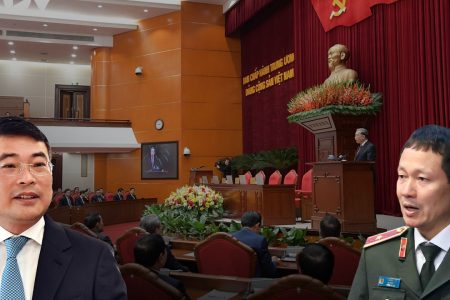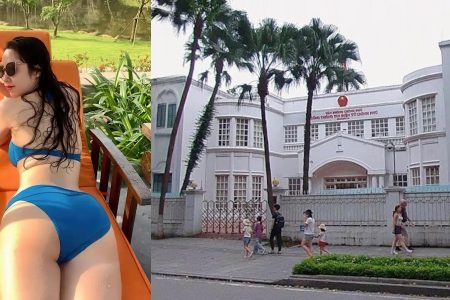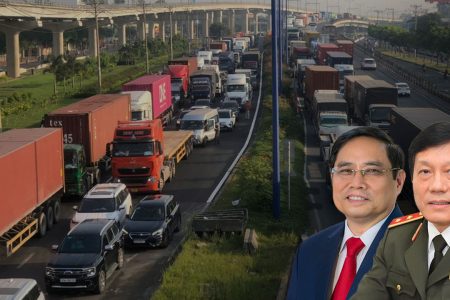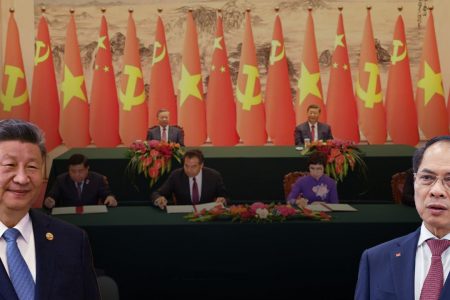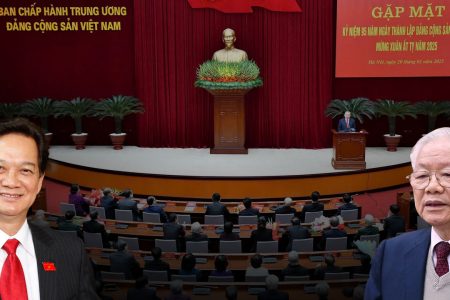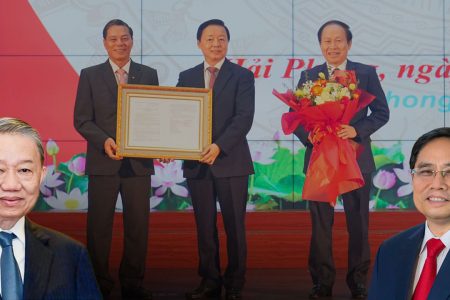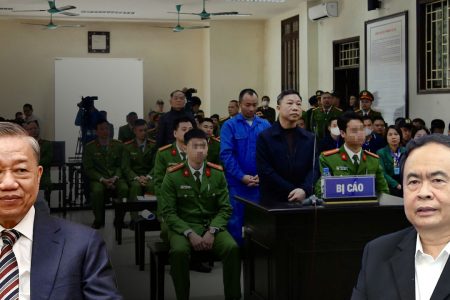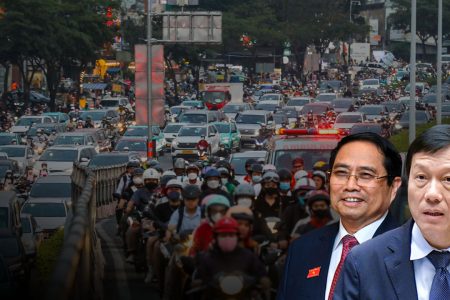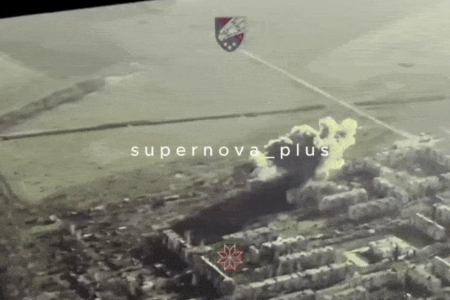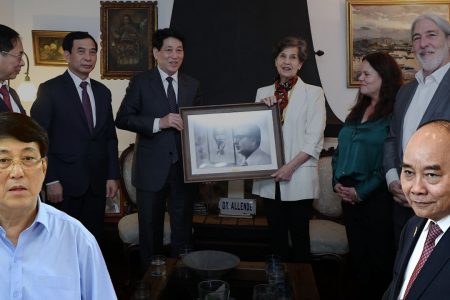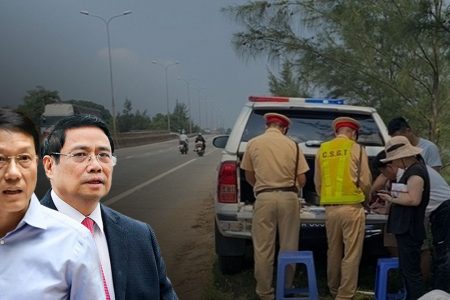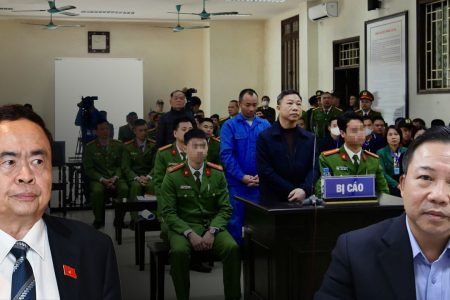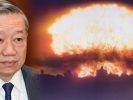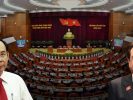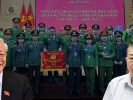
The “red line” was outlined by the Communist Party of Vietnam (CPV) to warn its officials, especially in high positions like the Prime Minister, of punishments if there are signs of “self-evolving and self-shifting of ideology” to challenge the absolute power of the party and threatens the regime’s survival.
“Red line” is a term derived from the English language used to refer to an invisible boundary drawn to warn that the crossing is not allowed or it will face the risk of punishment or suffer adverse consequences.
The “red line” is outlined by the party in the context of institutional instability when authoritarian functions are disturbed. The process of “self-development and self-transformation” of officials in the system is complicated and always in danger of breaking out. There are both objective and subjective causes, but profoundly, the contradiction between the communist ideology of the regime and the values of the market economy cannot have a convincing explanation. The reform process is generalized as groping, “tracing rocks across the river,” seeking answers to the problem of how the economy will change under the party’s tightening control. Responding by spreading fear makes the “red line” become “fragile.”
Transforming the economy from central planning and subsidy to market is a response policy that prevents the totalitarian regime from collapsing as it was with the model of the former Soviet Union and Eastern European socialist countries in the 1990s. During this transition, the position of prime minister with great power, empowered by law and reality governed by only economic growth, guarantees the legitimacy of the ruling one-party and regime, when leaders are not directly democratically elected by the people. Except for the wartime and its aftermath, the observation of the party congress terms during the “reform” period, since late 1986, shows that the personal role of the Party General Secretary became less important while the role of the Prime Minister is gradually increasing. With a relatively high growth record for nearly three decades, the economic manager is compared to a battle general that is easier to “stand out” with battle victories than the leadership of the Party by documents and resolutions. All the prime ministers have left their personal mark during their terms. More than that, the prime minister’s real authority strengthens every time he is seen as the one who brings “tangible benefits” to the officials in the ruling apparatus.
A turning point has occurred when the economy fell into crisis, “macroeconomic instability” brought with it “institutional instability” peaked during the 11th Congress term (2011-2016). Then PM Nguyen Tan Dung was even recommended to be disciplined by the Politburo for this term, but he “escaped” when the proposal did not receive the final approval from the members of the Central Committee. The position of General Secretary is challenged by a visible “rival” and the Party’s centralized leadership principle is shaken. Both the most powerful leaders of the Party and Government share the same ideology. Therefore, the idea that who is “innovative” and who is “conservative” is probably not satisfactory.
The party stated that the cause of the situation is that the deterioration of ideology and morality, and the leadership consuming lifestyle are serious, “threatening the regime’s survival.” Such statements from politicians are easily “sympathetic” by being propaganda. The obsession of the collapse of a system of pillars of Marxist-Leninist ideology has become prejudiced against so-called “recession” leaders, like M. Gorbachov, the former latest General Secretariat of the former Soviet Union, even considered by the few remaining totalitarian leaders of the system “criminals.” In fact, the officials in general and in particular are just the product of the institution.
The above prejudices have “led” the process of “rectifying” the Party and State apparatus. Human resource work is “key of the key” is the motto of rectification. The “red line” is drawn for executive apparatus officials, especially for the position of head of government. After re-elected General Secretary for the second term at the 12th Congress, Mr. Nguyen Phu Trong has intensified the campaign of “burning the furnace” “without the forbidden zone” for those corrupted officials who violate the Party’s regulations and the country’s laws. At the same time, spreading fear towards officials who “disobey” and intend to oppose, the purification and building new apparatus are also focused. This process is done continuously, from “bottom to top” and vice versa by newly established “strict” processes and directives, especially through party congresses from grassroots to central levels.
The 13th Congress at the beginning of this year marked the “achievements” of these efforts. Two hundred members of the Central Committee, official and alternate, powerful officials in the governing apparatus were selected, of which more than half were new participants for the first time. There are ten “old” who are “special cases“, which includes Mr. Nguyen Phu Trong and Nguyen Xuan Phuc. Party leaders “quickly” fill the “power vacuum” in the State apparatus in the last session of the 14th National Assembly. There are many comments on the new leadership that has “consolidated” the regional structure. The number of senior leaders from the southern region decreased while the party-specialized cadres “prevailed” over “technocrats,” the leaders of internal affairs and security, the inspection committee, the secretariat – those who worked regularly on the job. Party leadership was strengthened, many technocratic leaders were replaced or moved to positions of “controllable” or less importance…. The “combing teeth” position can help the Party control power-corrupted officials, but the professionalism, inheritance, and capacity of each head of ministries and branches are problems for leadership in the operating economy.
The change of positions “four pillars” is of much interest. The rotation of former Prime Minister Nguyen Xuan Phuc, highly regarded for his management capacity and results, has sparked speculation about his “transitional” role. The position that is most noticeable is the new Prime Minister Pham Minh Chinh. According to the “traditional” view, often from the successor of the deputy prime minister, Chinh is said to be “surprised” because of the “macro vision.” He was “assertive” and “successful” when the leader of a border province bordering China made public doubts about the issue of a “special economic administrative zone” affecting territorial sovereignty. The Special Economic Administrative Zone Bill is said to have been designed by him primarily. This bill was not passed by the 14th National Assembly before a wave of popular protests. In addition, the work process mainly in the field of security and the party’s specialized party creates concerns about his ability to operate at the macro level….
However, according to personal observation, the Party chose Mr. Chinh as the government leader as the “priority” against “self-development” and “self-transformation” to maintain the regime when other issues such as the capacity of macro practice, personal reputation … are still unknown. The “red line” outlined by the Party will test him in this “special” term. If Chinh succeeds and promotes economic growth, the possibility that he may become the successor to the position of the supreme power of the Party cannot be ruled out.
Thoibao.de (Translated)
Source: https://www.rfa.org/vietnamese/news/blog/new-pm-of-vn-and-a-red-line-04122021090251.html




